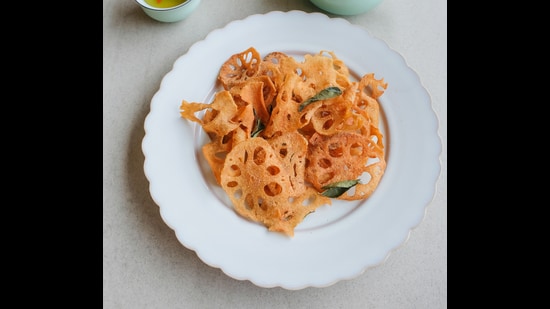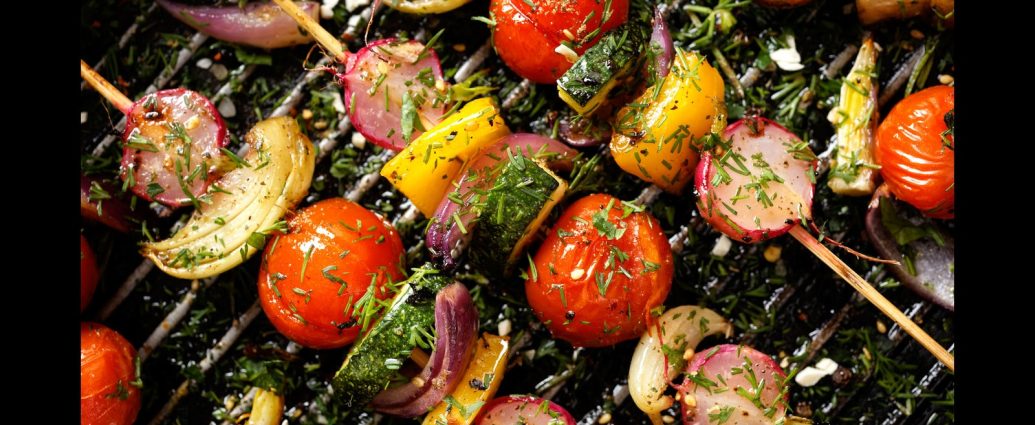Eat your veggies, we say, almost like it is punishment. It doesn’t have to be.
Treat vegetables well and they can elevate a meal; and this isn’t even very hard to do. My favourite flavour-altering hack, for instance, is to add salt at the start of a cook rather than later on. With heat and time, the salt permeates to beneath the skin of the vegetable, transforming its flavour, helping other flavours soak in, and making some cooked vegetables juicier too. What else can you do to make them more appealing?
Preserve the bright green. It is far more appetising than the grey-green hue that results when acids are mixed in with leafy vegetables. Acids essentially attack the chlorophyll atom (which is a ring of carbon and nitrogen atoms, around a magnesium centre).
The acids from ingredients such as tomatoes, tamarind and lemon flood the zone with hydrogen ions, which knock the magnesium out and replace it. This causes the change in hue. And this is why traditional recipes for green such as saag, palak paneer and the Tamilian keerai or spinach masiyal does not feature these ingredients. (Of course, if you don’t mind a dull green, there’s nothing wrong with it. The nutrition is all still there. Go ahead and add tomatoes to your saag, if that’s how you like it.)
Learn how to treat your tomatoes right because, one way or another, they will change the flavour and texture of your dish. Most people make the mistake of viewing this ingredient as a whole. The tomato is really three things: the skin, fruit wall, and central seed jelly.
The seed jelly carries most of the sourness, and much of the water content. The fruit wall is prized for its sugar and amino acids. Well-cooked, these compounds react to give a sweet, rich flavour to a broth, sauce or sabzi. (Think of the best aloo-tamatar you’ve ever had; it was the tamatar doing all the heavy lifting.)
The trick is to view the tomato as three ingredients, and scrutinise the recipe to see which of these to use.

Know what texture to expect. If vegetables feel more palatable soft, don’t steam them (or, steam them for much longer). Vegetables contain high levels of a water-soluble fibre called pectin. Cooked in water, this breaks down, causing most vegetables to soften. When there is no surrounding water for the pectin to dissolve in, it is more likely to retain its structure. Thus roasting, grilling and steaming yields veggies with a much firmer bite.
There are some vegetables that never soften completely. Beetroot, bamboo shoot, water chestnut and lotus root are among those that remain naturally firm. This is because they contain certain phenolic compounds that bond with the carbohydrates in their cell walls, preventing the pectin from being dissolved entirely. This can be helpful. Want some texture (and a boost of nutrients) in dal? Just add beetroot.
Learn how to use or deactivate enzymes. These compounds are part of the plant’s defence systems. Garlic, for instance, contains the sharply flavoured enzyme alliinase, which is released when one cuts (or bites into) a garlic pod. The enzyme is meant to discourage herbivores, but we love the flavour. So chop garlic finely, to get more of it.
Another enzyme, called polyphenol oxidase, is responsible for turning vegetables such as potato, bottle gourd and eggplant brown from oxidation. Heat can be used to block such action. This is why many chefs blanch their vegetables in boiling water; any exposure to temperatures of more than 60 degrees Celsius effectively deactivates most enzymes.
If blanching feels like too much work, use acids. Soak chopped onion in a little lemon juice, for instance, and their sharpness of the alliinase in it is reduced and the overall flavour becomes mellower and more complex. These quick-pickled onions can now add the perfect crunch to pav bhaji or chaat.
My point is that when it comes to vegetables, we are often so focused on nutrition, we can forget to have fun. As a result, we eat less of them, and get less nutrition too. It’s an easy cycle to break, and breaking it is guaranteed to make every meal something to look forward to.
(To reach Swetha Sivakumar with questions or feedback, email [email protected])
